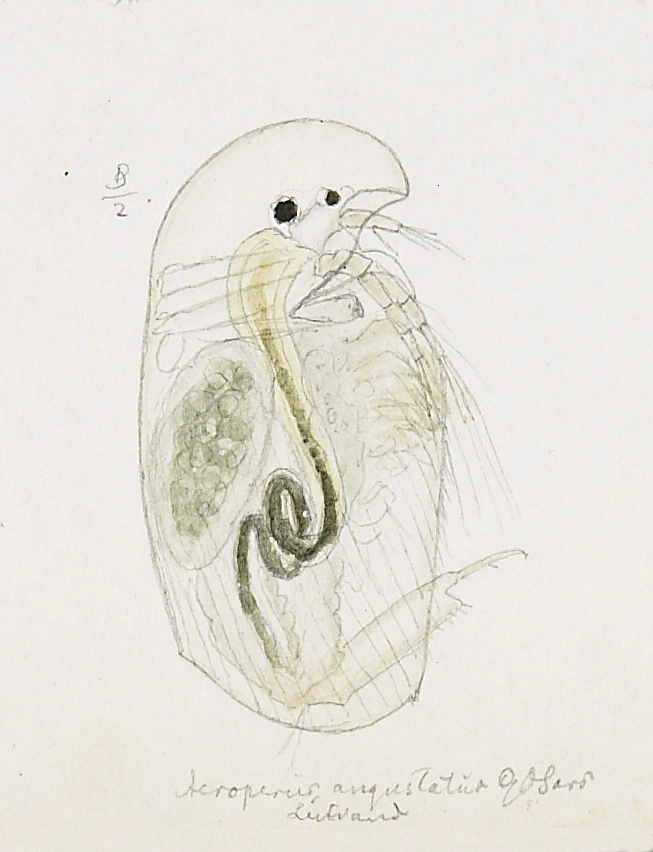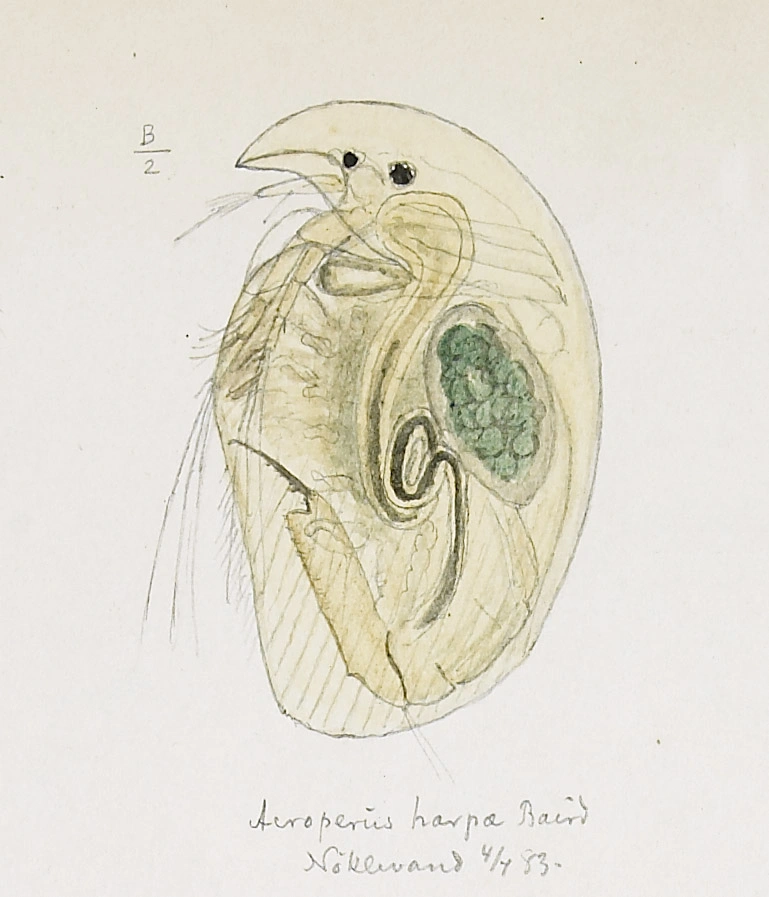Acroperus angustatus
While A. harpae has the look of a harp, A. angustatus is more compressed laterally. Records so far indicate that it is weakly acid-tolerant.
Key characteristics
Acroperus angustatus is very close to A. harpae, and until recently it has been merged together with the latter. After the validity of both species was confirmed by Sinev (2009), taxonomists in Norway have distinguished between the two species. Both body shape and antennal morphology can be used to separate the two species. While A. harpae has the look of a harp, A. angustatus is more compressed laterally and with maximum hight before or at the midline. While the seta arising from the basal segment is less than 2/3 length of the middle segment in A. harpae, this seta is longer in A. angustatus, approximately the same length as the second segment. Its eye is placed approximately in the centre of the head shield and the carapace has stripes going diagonally from the upper front corner down to the lower post corner. The post abdomen is long and slender and is normally protruding out of the carapace. The carapace is very transparent and almost complete colourless.
Female: Length 0.55–0.95 mm
Male: Length 0.49–0.58 mm
Ecology and distribution
A. angustatus is a littoral scraper and since it has been mixed up with A. harpae, it is more common than records so far indicate. It is truly widely distributed in Norway and except for one, all records so far are from the littoral of lakes situated <500 m a.s.l. A. angustatus is not found when pH <6,0, and is therefore assumed to be weakly acid-tolerant.
| Vitenskapelig navn | < 4,5 | 4,5 - 4,9 | 5,0 - 5,4 | 5,5 - 5,9 | 6,0 - 6,4 | 6,5 - 7,0 | 7,0 - 7,4 | > 7,5 |
|---|---|---|---|---|---|---|---|---|
| 0 | 0 | 0 | 0 | 1,9 | 1,1 | 0,4 | 0 |
| Vitenskapelig navn | < 1,0 | 1,0 - 1,4 | 1,5 - 1,9 | 2,0 - 2,9 | 3,0 - 3,9 | 4,0 - 4,9 | 5,0 - 6,9 | 7,0 - 9,9 | > 10,0 |
|---|---|---|---|---|---|---|---|---|---|
| 0 | 0 | 0 | 0 | 0 | 0 | 1,8 | 0 | 0,4 |
| Vitenskapelig navn | < 0,01 | 0,01 - 0,09 | 0,1 - 0,9 | 1,0 - 9,9 | 10,0 - 99 | 100 - 999 | > 1000 |
|---|---|---|---|---|---|---|---|
| 0 | 0 | 0 | 0 | 0,8 | 3,2 | 10,9 |
| Vitenskapelig navn | < 100 | 100-299 | 300-499 | 500-699 | 700-999 | >1000 |
|---|---|---|---|---|---|---|
| 0,9 | 1,7 | 1 | 0 | 0,3 | 0 |
Look-alikes
Acroperus harpae

